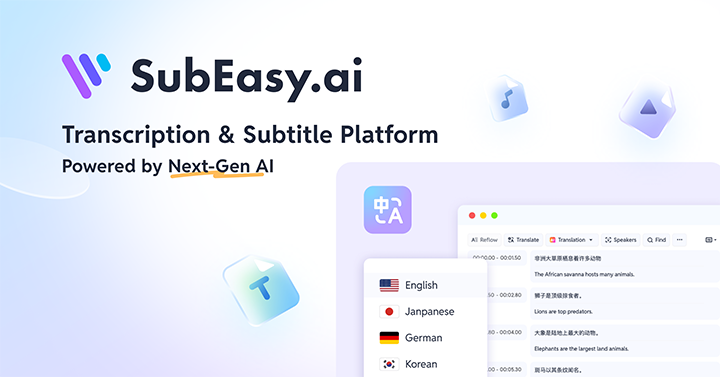How to Translate Swahili to English Effectively: A Complete Guide
Swahili, or Kiswahili, is a beautiful and widely spoken language across East Africa.
Translating Swahili to English accurately requires attention to cultural context, grammar differences, and regional variations.
In this guide, we’ll explore essential tips for effective Swahili to English translation, whether you're working with text, audio recordings, or video content.
Challenges in Swahili to English Translation

- Noun Classes: Swahili uses an extensive system of noun classes that influence verb agreement and adjectives.
- Verb Complexity: Swahili verbs can incorporate tense, subject, and object within a single word.
- Regional Variations: Differences between Tanzanian, Kenyan, and Congolese Swahili can impact translation.
Best Methods for Translating Swahili to English
1. Use an Online Translation and Transcription Platform

Services like SubEasy allow you to upload Swahili audio or text and receive highly accurate English translations.
Benefits:
- Supports recognition of different Swahili dialects.
- Fast and efficient transcription.
- Easy to edit, format, and export translations.
2. Hire Professional Human Translators
For sensitive or formal content such as:
- Legal contracts
- Educational materials
- Government communications
Professional translators ensure precise adaptation of meaning and tone.
3. AI Translation with Human Editing
Use AI to generate a fast draft and then manually refine it to ensure cultural and grammatical accuracy.
Tips for Better Swahili to English Translation

- Pay attention to noun class agreement: It can alter the meaning of sentences significantly.
- Understand verb structures deeply: Swahili verb forms often pack multiple meanings.
- Adapt culturally specific terms: Some Swahili expressions need explanation rather than literal translation.
Common Mistakes to Avoid
- Misinterpreting noun class agreements
- Overlooking complex verb structures
- Literal translations without cultural adaptation
Conclusion
Translating Swahili to English effectively requires understanding the grammar, culture, and regional nuances of Swahili.
By using platforms like SubEasy and applying careful editing, you can create clear, accurate, and professional translations.
Ready to translate Swahili audio or text with ease? Start using SubEasy today!
If you're also interested in translating Vietnamese content, explore our practical guide on Vietnamese to English translation.


